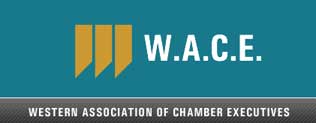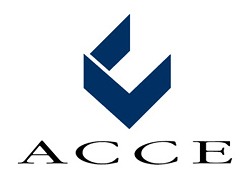
We’re not casting stones here. Sadly, many of us are in a position where reactive is all we have. But how might your professional life and that of your chamber change if you could transform from reactive to proactive?
What’s The Difference Between Proactive and Reactive Chamber Leadership?
Let’s start by ensuring we are on the same page in understanding the difference in the approach to leadership.
Proactive Chamber Leadership
Proactive chamber leadership requires you to set up a framework ahead of time. No matter what your intentions are, you cannot be a proactive leader and fly by the seat of your pants. Proactive leaders deliberate ahead of time and set up boundaries, protocols, processes, and expectations. That does not, however, mean they are non-responsive, nor do they use protocols as shields to mask their inflexibility.
Proactive chamber leaders:
- Anticipate future challenges and opportunities for their members and community
- Develop long-term strategies aligned with the chamber’s vision and values
- Focus on creating value and delivering tangible benefits to members proactively
- Use data analytics to gain insights and make informed decisions
- Invest in leadership development within the chamber
- Cultivate strong community relationships and position the chamber as a leader
- Promote continuous learning about industry trends and best practices
- Adjust strategies flexibly in response to changing circumstances
Reactive Chamber Leadership

Just as the name sounds, reactive chamber leaders react to situations. This can be an extremely stressful way to manage because it revolves around responding to the squeaky wheel–and there is never just one squeaky wheel. It makes it difficult to prioritize actions and decisions.
Most leaders don’t want to be reactive. It’s something that happens when they’re putting out a million different fires. It can feel akin to trying to steer a runaway car without brakes down a hill; you steer and turn to the best of your abilities, but it’s frightening and exhausting. All of your attention is concentrated on trying not to crash.
Often, a chamber leader becomes reactive without realizing it. They go into the leadership position with the best intentions of helping everyone. And before they know it, they are trying to juggle it all in a people-pleasing nightmare. That’s why reactive leaders feel busy all day but don’t get much done.
Reactive chamber leaders:
- Respond to situations and member needs as they arise
- Focus on immediate issues rather than long-term planning
- Wait for members to request services or support
- Make decisions based on limited information or urgent demands
- Spend most of their time dealing with day-to-day operations and “putting out fires”
- May struggle to adapt to major changes or disruptions
- Risk falling behind on industry trends or member expectations
Key Differences
The main differences between proactive and reactive chamber leadership are:
- Strategic Focus: Proactive leaders plan ahead and set long-term goals, while reactive leaders primarily address immediate concerns.
- Value Creation: Proactive leaders actively seek ways to deliver value to members, whereas reactive leaders respond to member requests.
- Decision Making: Proactive leaders use data and foresight to make decisions, while reactive leaders often make quick decisions based on current circumstances.
- Community Engagement: Proactive leaders actively build relationships and influence in the community, while reactive leaders may have a more limited community presence.
- Adaptability: Proactive leaders anticipate and prepare for change, making them more adaptable, while reactive leaders may struggle with unexpected shifts.
- Member Satisfaction: Proactive leadership often leads to higher member satisfaction by addressing needs before they become issues, while reactive leadership may result in members feeling their needs are not fully met.
While adopting a more proactive approach is the ideal, it can feel overwhelming to find the time to do so. But finding the time to set up a framework will help you achieve long-term success at a lower personal cost, enhance member value, and increase your chamber’s impact in the community.
To become a more strategic chamber leader, consider implementing the following approaches:
Strategies for Becoming More Proactive
Develop a Clear Vision and Long-Term Strategy

Create a compelling vision for your chamber’s future and develop a comprehensive long-term strategy to achieve it. This should align with your chamber’s core purpose and values while addressing the evolving needs of your members and community.
Examine your chamber’s:
- mission
- vision
- values
- strategic plan
Knowing these things and getting clear on them will help you weigh the importance of the decisions you’re making–even when you’re frazzled. For instance, instead of polling public sentiment on whether you should continue an event that has been a recent loss leader, you can examine it from the strategic perspective of “Is this event in keeping with the chamber’s strategic plan and mission?”
Focus on Creating Value
Prioritize initiatives that deliver tangible value to your members, not things that are the favorites of your loudest supporters. This could include networking opportunities, educational programs, or advocacy efforts that directly benefit local businesses. Assess and refine your offerings to retain only those that are relevant and impactful (and in keeping with your mission). A tiered membership model could be a component of this as well.
Create a Calendar of Needs
Similar to an editorial calendar, it often helps to have your year (or at least your quarter) mapped out. Begin by adding all your chamber events. Work backward from there and address promotional and administrative needs around the events. Incorporate sponsorships and when those communications should be sent out.
Seeing chamber needs in a visual way can help you align resources proactively instead of realizing at the last minute you need ambassador training two days before the event.
Embrace Data-Driven Decision Making
Utilize data analytics to gain insights into member preferences, attendance patterns, and industry trends. Make informed decisions and tailor your services effectively by:
- Tracking member engagement and preferences
- Identifying trends in local business needs
- Measuring the success of chamber initiatives
- Allocating resources more effectively based on data insights
Foster Strong Community Relationships
Position your chamber as a leader in the community by actively participating in local initiatives, collaborating with government officials, and addressing key issues affecting businesses in your area. This involvement can enhance your chamber’s influence and relevance. Plus, by taking on the substantive issues facing business, you may be less likely to be pulled into the fray on less consequential drama.
Invest in Leadership Development
Cultivate strong leadership within your chamber by providing opportunities for professional growth and mentorship. Encourage your team and board members to develop their skills and contribute to the chamber’s strategic direction. This means championing your own professional development as well.
Additionally, a formal program should be designed to nurture future chamber leaders and board members. Having a system in place before you need it can alleviate a lot of stress and help improve decision-making. This strategic leadership development initiative can:
- Ensure a pipeline of qualified leaders for the chamber
- Engage members more deeply in chamber operations
- Foster innovation by bringing in fresh perspectives
- Strengthen the chamber’s long-term sustainability
Enhance Communication and Persuasion Skills
Develop your ability to articulate your chamber’s vision and goals effectively. Strong communication skills will help you inspire your team, engage members, and influence stakeholders. Additionally, the more often you speak about goals and missions, the more you will be seen as an advocate for business and not just a retail business membership group.
Create an Advocacy Framework

Just as your strategic plan keeps you on track to accomplish your chamber goals, an advocacy framework or priority list will guide your advocacy efforts and make them seem less capricious. Establish and share the pillars of your advocacy efforts. What legislative issues or initiatives will you support this year? Having a structure allows you to:
- Prioritize key issues affecting local businesses
- Create a clear process for developing policy positions
- Engage members in advocacy efforts more effectively
- Measure and communicate the impact of advocacy initiatives
Promote Continuous Learning
Stay informed about industry trends, economic developments, and best practices in chamber management. Encourage a culture of continuous learning within your organization to ensure your chamber remains innovative and adaptive. There are some things people will turn to you for that are not in your “lane.” Don’t get pulled into that simply because you aren’t aware of best practices.
Implement a Structured Event Planning Process
Create a standardized approach to planning and executing chamber events. That way, you can:
- Ensure consistency in event quality and branding
- Streamline resource allocation for different types of events
- Measure event success using standardized metrics
- Continuously improve based on structured feedback processes
- Adequately market each event
- Line up sponsors earlier in the planning process, giving them the most value and providing the chamber with earlier and more consistent support
Practice Flexibility and Resilience
Be prepared to adjust your strategies in response to changing circumstances. Just because you have protocols in place to assess whether the chamber should be involved or not, does not mean you should refuse to alter those protocols. Recognize that change is inevitable and healthy. Additionally, develop the ability to navigate challenges with a positive outlook and learn from setbacks.
Emphasize Integrity and Transparency
Build trust with your members, staff, and community by consistently demonstrating integrity in your actions and decisions. Be transparent about your chamber’s operations and performance. Create regular times to review data and goals. Share those.
Cultivate Empathy and Emotional Intelligence
Develop your ability to understand and address the needs and concerns of your members, staff, and stakeholders. This emotional intelligence will help you build stronger relationships and make more informed decisions.
Understand You Don’t Need to Implement Every Suggestion
Whether coming from a board member or a neighbor, know that you don’t need to incorporate every requested word change and date schedule. Some people simply feel the need to give their input even when it has little to do with their role. All suggestions aren’t created equal.
While implementing a suggestion from a loud detractor may seem like the easiest course of action, it may cause more problems in the long run, especially if it isn’t a well-thought out suggestion, lacks purpose, and embattles your staff. Always ask, if the suggestions you receive are the best course of action and understand the cost of implementation.
By embracing these strategies, you can enhance your effectiveness as a chamber leader and put away your fire hose for good…or at least for a few days.

